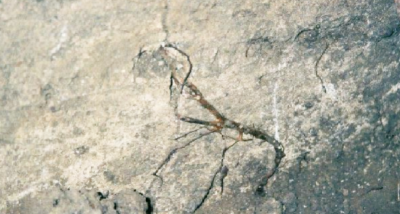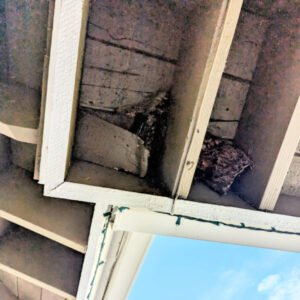Fungus
 Fungus
Fungus
Fungus is a plant-like organism that lacks chlorophyll, meaning it cannot produce energy through photosynthesis. Instead, it survives by breaking down organic material, such as the cellulose in wood. Fungi use an external digestive system, secreting enzymes that decompose wood fibers and allow the fungus to absorb nutrients.
Fungal growth begins when airborne, waterborne, or animal-carried spores land on a suitable surface. For wood-decaying fungi to thrive, four conditions must be met:
- Food – Wood serves as the primary nutrient source.
- Temperature – Optimal growth occurs between 70–80°F.
- Moisture – Wood must have a moisture content above 20%.
- Air – Fungi require oxygen. For example, fungi cannot grow if wood is fully submerged in water.
Key Structural Elements of Fungi:
- Rhizomorphs – Root-like cords of fungal hyphae that resemble plant roots but lack bark.
- Hyphae – Thread-like filaments that form the building blocks of fungal growth.
- Mycelium – The vegetative part of a fungus, consisting of a dense network of hyphae. Often appears as a white or gray mass.
- Sporophore (fruiting body) – The reproductive structure of fungi, responsible for producing and dispersing spores.
Wood-destroying fungi play a crucial role in natural decomposition but can cause significant structural damage when they colonize wooden buildings.
 Wood rot:
Wood rot:
Often referred to as dry rot, is a destructive condition caused by an active fungal infection. The fungus responsible is a living organism that feeds on the cellulose within wood, breaking down its structure and leading to visible shrinkage and brittleness in the affected areas. This process weakens the wood, compromising its structural integrity.
The primary cause of dry rot is excessive moisture, which creates the ideal environment for fungal growth. Once the wood is infected, it cannot be treated or salvaged—it must be removed and replaced. However, replacing the wood without addressing the underlying moisture problem is a temporary fix. The same conditions will eventually cause the new wood to rot, leading to recurring damage and additional repair costs. Correcting the moisture issue—whether it’s a leak, poor ventilation, or high humidity—should always be the first step in remediation.
The Relationship Between Moisture, Fungus, and Termites
While termites are notorious for targeting wood, they are primarily attracted to softer, damp wood rather than the fungus itself. The excess moisture that promotes fungal growth also creates an inviting environment for termites. In this way, the presence of dry rot can indirectly increase the risk of termite infestation, as it indicates favorable conditions for both pests and fungi.
The Bigger Threat: Fungus or Termites?
It can be argued that wood-destroying fungi pose an even greater threat than termites. Fungal damage often progresses silently and is only discovered when significant structural issues have already developed. Unlike termites, which typically leave visible traces like droppings, mud tubes or discarded wings, fungal decay can go unnoticed as it often begins inside the wood, working its way out over time.
The scale of the problem is staggering: it’s estimated that one in ten trees harvested for lumber is used to replace wood damaged by fungal decay. This statistic highlights the significant financial and environmental impact of wood rot, making prevention and early detection crucial.
Prevention and Protection
Preventing wood rot begins with moisture control. Key strategies include:
- Addressing leaks and drainage issues: Ensure roofs, gutters, and plumbing systems are in good condition.
- Improving ventilation: Proper airflow in crawl spaces, basements, and attics helps reduce humidity.
- Sealing and treating wood: Using moisture-resistant or pressure-treated wood can add a protective barrier against decay.
- Regular inspections: Early detection of moisture buildup or fungal growth can save time and money in the long run.


